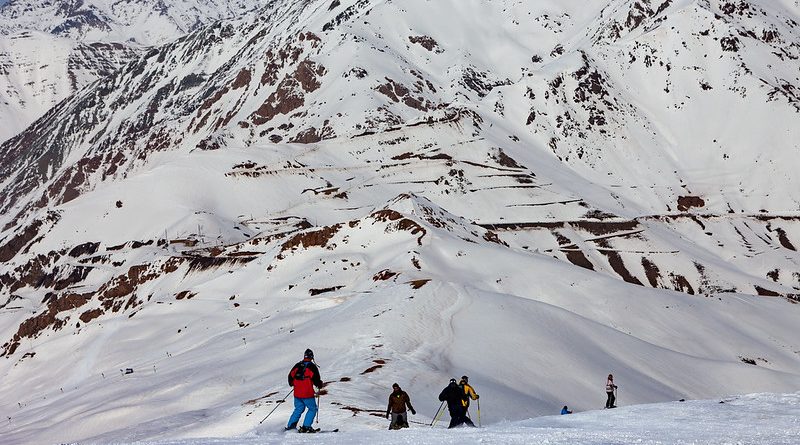Skiing in Iran
Even in these austere and sanctioned times, if you want to rub shoulders with Iran’s high society, head for the slopes. If you are a ‘nouveau riche’ Iranian there is no better place to be seen than skiing the Alborz Mountains around Tehran. And even if you are a not-so-rich tourist, fear not – a lift pass costs around $15 a day, and hiring kit is easy and cheap.
Resorts and facilities
Dizin is the most well-known ski resort, located about two and a half hours drive from Tehran. It is well equipped with a hotel, tennis courts, hiking, cycling and horse-riding facilities, and nice sunny weather. Dizin was established as a resort in 1969 and is a bit of a grey concrete affair, with no nightlife, but the snow is excellent, due to the altitude and the north-facing slopes. There is plenty of lovely powder and off-piste fun to be found, a decent half-pipe and a dedicated snowboarding community, and all served by twelve lifts, which are high-tech and trustworthy.
The on-piste scene
The season in Dizin runs from mid-January to mid-March, but there are fifteen less famous resorts in Iran – some of which stay ski-able until mid-May. Shemshak – where people have been skiing since 1958 – is close to Dizin, and offers more of a challenge to experts and mogul-lovers, compared to Dizin where the pistes are best for beginners and intermediates. Mt Damavand is the place to go for cross-country skiing.
The on-piste scene in Iran has been described as a barometer on which to measure the strictness of social codes. At the moment, women can compete equally, and as the Revolutionary Guards don’t patrol the snow, women’s dress is a little more relaxed, but this hasn’t always been the case. There once was a moral patrol, the punishment for skiing with the opposite sex was 30 lashes or a $200 fine. The sexes had to queue separately, and at times women were required to wear a version of the chador which would whip around behind them as they skied.
Check on the latest regulations before you head to the slopes.
By Hannah Englekamp




